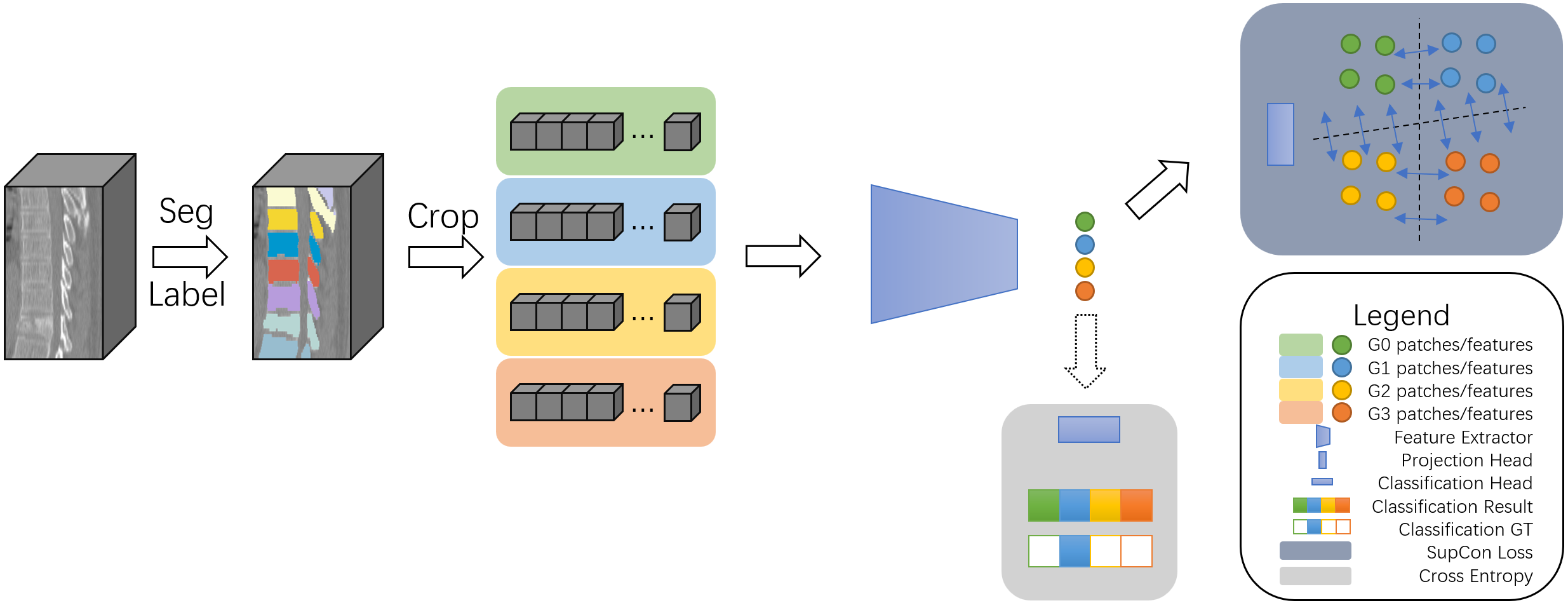Faint Features Tell: Automatic Vertebrae Fracture Screening Assisted by Contrastive Learning
Long-term vertebral fractures severely affect the life quality of patients, causing kyphotic, lumbar deformity and even paralysis. Computed tomography (CT) is a common clinical examination to screen for this disease at early stages. However, the faint radiological appearances and unspecific symptoms lead to a high risk of missed diagnosis, especially for the mild vertebral fractures. In this paper, we argue that reinforcing the faint fracture features to encourage the inter-class separability is the key to improving the accuracy. Motivated by this, we propose a supervised contrastive learning based model to estimate Genent's Grade of vertebral fracture with CT scans. The supervised contrastive learning, as an auxiliary task, narrows the distance of features within the same class while pushing others away, enhancing the model's capability of capturing subtle features of vertebral fractures. Our method has a specificity of 99% and a sensitivity of 85% in binary classification, and a macro-F1 of 77% in multi-class classification, indicating that contrastive learning significantly improves the accuracy of vertebrae fracture screening. Considering the lack of datasets in this field, we construct a database including 208 samples annotated by experienced radiologists. Our desensitized data and codes will be made publicly available for the community.
PDF Abstract



